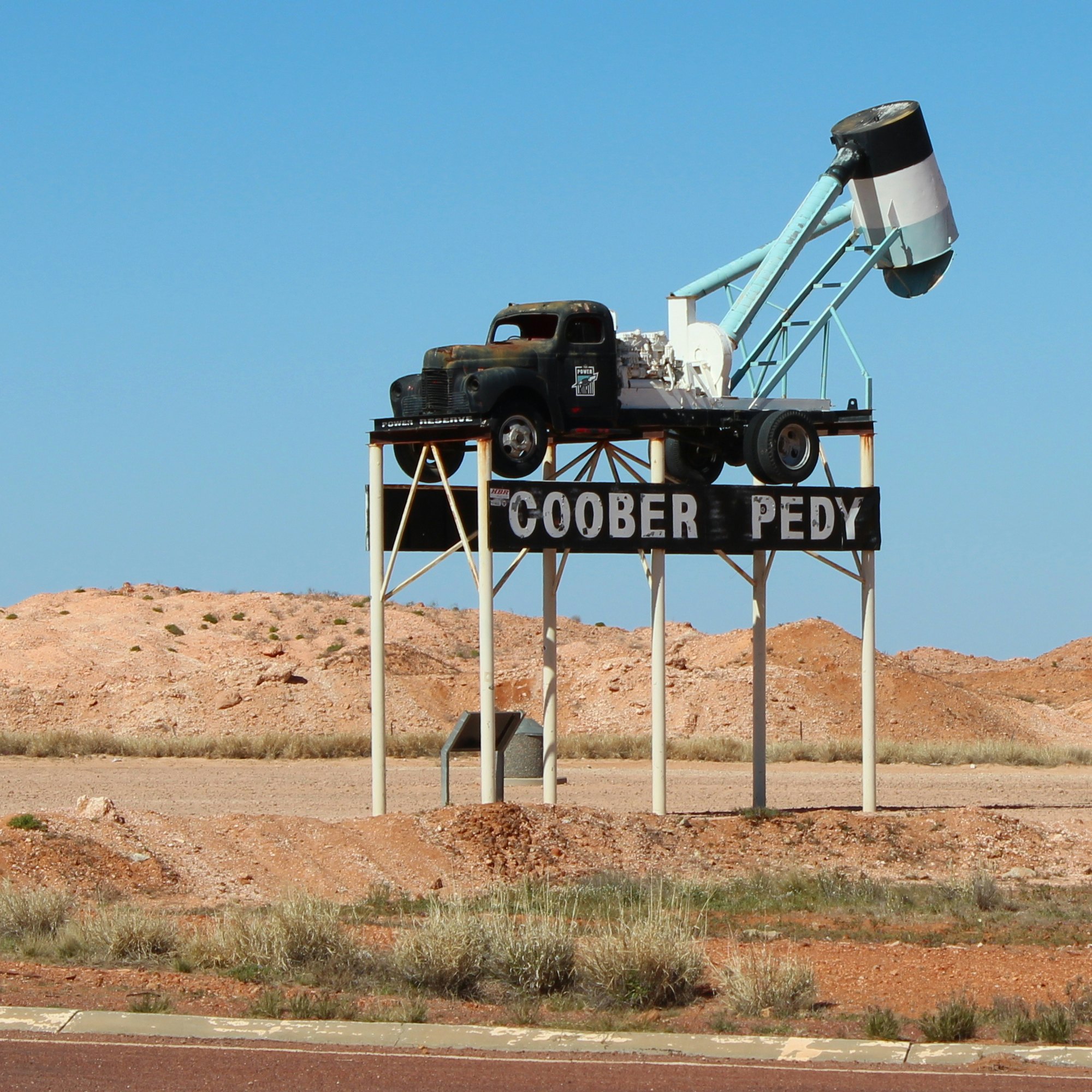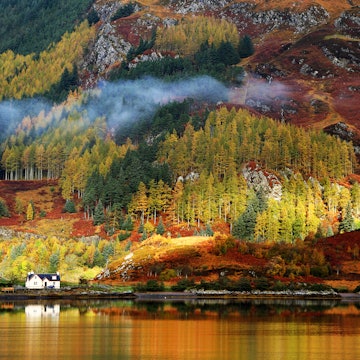

Sometimes the best stories can be found by looking down © Mark Kolbe / Getty Images
We live in a three-dimensional world. Yet, while our instinct is often to look up, sometimes the best stories can be found by looking down. From caves and tunnels to bunkers and futuristic infrastructure, there's a huge variety of fascinating and awe-inspiring subterranean places to travel to around the world.
Chris Fitch, author of Subterranea: Discovering the Earth's Extraordinary Hidden Depths, lists a selection to add to your (post-pandemic) bucket list, proving that the world below our feet is every bit as vivid and evocative as that we see around us.

Yucatán cenotes – Mexico
Sixty-six million years ago, an asteroid smashed into what is now Mexico's Yucatán Peninsula. The impact triggered a super-tsunami that swept the globe, ending the reign of the dinosaurs. Today, the outer rim of the 112-mile diameter crater left behind is visible from an overhead map of around 900 deep holes in the ground. Known as “cenotes”, these holes plunge down awe-inspiring chasms, exposing spectacular pools of clear, mineral-rich freshwater below.
This water is so naturally clean and drinkable that it sustained the ancient Mayan empire for 3,000 years. Perhaps the most famous example is the 115-ft-deep sacred cenote at Chichén Itzá, a Unesco World Heritage Site and tourist attraction.
But there are hundreds of diverse and beautiful cenotes scattered across the landscape, and swimming in them is a popular activity when visiting the Yucatán. Self-driving or private taxis are your best bet for traveling between these often remote locations. Many have tourist facilities and personal guides available on-site, in exchange for a small fee.
Chauvet du Pont d'Arc – France
Sadly, none of us can visit the real Chauvet du Pont d'Arc cave. Ever since a trio of explorers (including local ranger Jean-Marie Chauvet, after whom the spot is named) pushed their way through an enticing crack in the rocks in this region of southeast France in late 1994 to discover the oldest known cave drawings in the world, access has been strictly controlled.
Being cut off from the outside environment for between 29,000 and 37,000 years, experts fear allowing tourists (and the carbon dioxide, heat and humidity they would bring with them) inside would destroy the delicate, technically sophisticated artworks that adorn the walls, ruining them forever.
Instead, visitors to Chauvet du Pont d'Arc are directed towards a perfect replica constructed nearby. The many exotic animals depicted on the cave walls – mammoths, lions, rhinos, and more, evidence that such creatures once lived alongside early humans in this region tens of thousands of years ago – have been carefully copied, with over 1,000 drawings on display.
The standard cave tour takes around an hour and includes not only a multilingual guide, but also a simulation of the sensory environment experienced inside the real Chauvet du Pont d'Arc, such as low lighting and distinctive smells.

Derinkuyu – Turkey
If modern cities appear impressive, wait until you've taken a tour around Derinkuyu, probably the largest and most impressive of the 250 subterranean settlements carved into the landscape of Cappadocia, in the central Anatolian plateau of modern Turkey.
Dating back an estimated 4000 years, this warren of homes, stables, churches and more is almost invisible from above, but, if you know the way inside, opens into an intricate and sophisticated network of tunnels below ground.
Complete with vertical shafts to aid airflow and enable inter-level communication, Derinkuyu was once home to 20,000 people. The purpose for this and other underground Byzantine cities was primarily defensive, as a strategic tactic to evade invading forces. Hidden entrances were equipped with Indiana Jones–style rolling boulders to trap attackers, with scalding hot oil ready to be poured from above.
So well obscured was this hideaway that its precise location was lost for centuries, and revealed only when until a modern resident stumbled upon a mysterious passageway behind a wall in his home. While regular buses from nearby Nevşehir town are one option for reaching the site, there are also all-inclusive group day tours available, as well as multi-day trips starting and ending in Istanbul.

Kazumura – United States
A lava tube is a river of molten rock where the outside has cooled and hardened, allowing hot liquid lava to flow through the center. In 1981, Kazumura, on the island of Hawai'i was measured at just over seven miles, making it the longest lava tube in the world. In 1995, four nearby tunnels were confirmed to be all part of the same massive lava tube – stretching over 40 miles between the upper slopes of Mount Kilauea and the Pacific Ocean.
This kapu (sacred) subterranean space is believed to have been formed during a 60-year eruption during the 15th century, according to a timeline proposed by geomythologists, who combined indigenous island mythology with contemporary empirical data. The tunnel has a ceiling up to 59-feet high, dripping with bizarre worm-like “lavacicles." It has over 100-known entrances and descends almost a full mile in altitude from volcano to coast.
Small group tours are available to help visitors navigate the potentially treacherous conditions in Kazumura, including jagged rocks and perilous hidden cavities.
Spelunking Kazumura Cave, the world’s longest lava tube

Coober Pedy – Australia
The Australian desert is famously an insufferably hot place. Summer temperatures can hit 50°C (122°F) or more in the South Australian town of Coober Pedy, making survival itself a risky prospect. Which does then beg the question of why 3000 Australians call this town home, 528 miles from the state capital of Adelaide.
The answer is opals. These valuable translucent stones were first discovered by aspiring gold prospectors in February 1915, and led to an influx of miners on the hunt for opals that continues to this day, making Coober Pedy the proud “opal capital of the world.” To combat the extreme conditions, these miners did what they knew best, and went underground.
Today, visitors to the remote settlement of Coober Pedy may initially feel they're in the wrong place, with little evidence of life visible from ground level. It's only when you discover the remarkable homes, shops, hotels - even a museum and a casino - dug into the earth itself, that this subterranean town truly reveals itself.
Multiple generations have now lived their lives in residences burrowed out below ground, enjoying the cooling effects of the surrounding sandstone keeping their homes to a comfortable 73°F even as the mercury spikes up top. Organized tours to explore the hundreds of working opal mines can be facilitated via the Coober Pedy Visitor Information Centre.

Large Hadron Collider – Switzerland/France
Come see the place where the world didn't end. Despite apocalyptic headlines, the Large Hadron Collider (LHC), activated in September 2008, did not create a black hole, but instead enabled a series of scientific breakthroughs that revolutionized humanity's understanding of physics.
The circular 17-mile tunnel buried beneath the city of Geneva, organized by the Franco-Swiss CERN (European Organisation for Nuclear Research) laboratory, enables scientists to fire particles around at almost the speed of light.
Collisions between these particles have led to such achievements as the discovery of the fabled Higgs boson, so critical to our understanding of the universe that it is nicknamed the “God particle.” When construction on the LHC tunnel itself was first completed in 1988 (for the Large ElectronPositron Collider, the predecessor to the LHC) it was at the time Europe's largest civil engineering project.
The tunnel operates at -465°F and is almost a complete vacuum, as devoid of atmosphere as the moon. Free daily two-hour, pre-booked tours are run by CERN (although sadly this does not include the opportunity to freely wander around the extraordinary tunnel itself).
You might also like:
4 unbelievable lava tubes left behind by ancient volcanoes
Hawai'i's most popular walk-through lava tube has finally reopened
Unlikely destinations for an unforgettable family holiday
Chris Fitch is the author of Subterranea: Discovering the Earth’s Extraordinary Hidden Depths available September 3, 2020.













